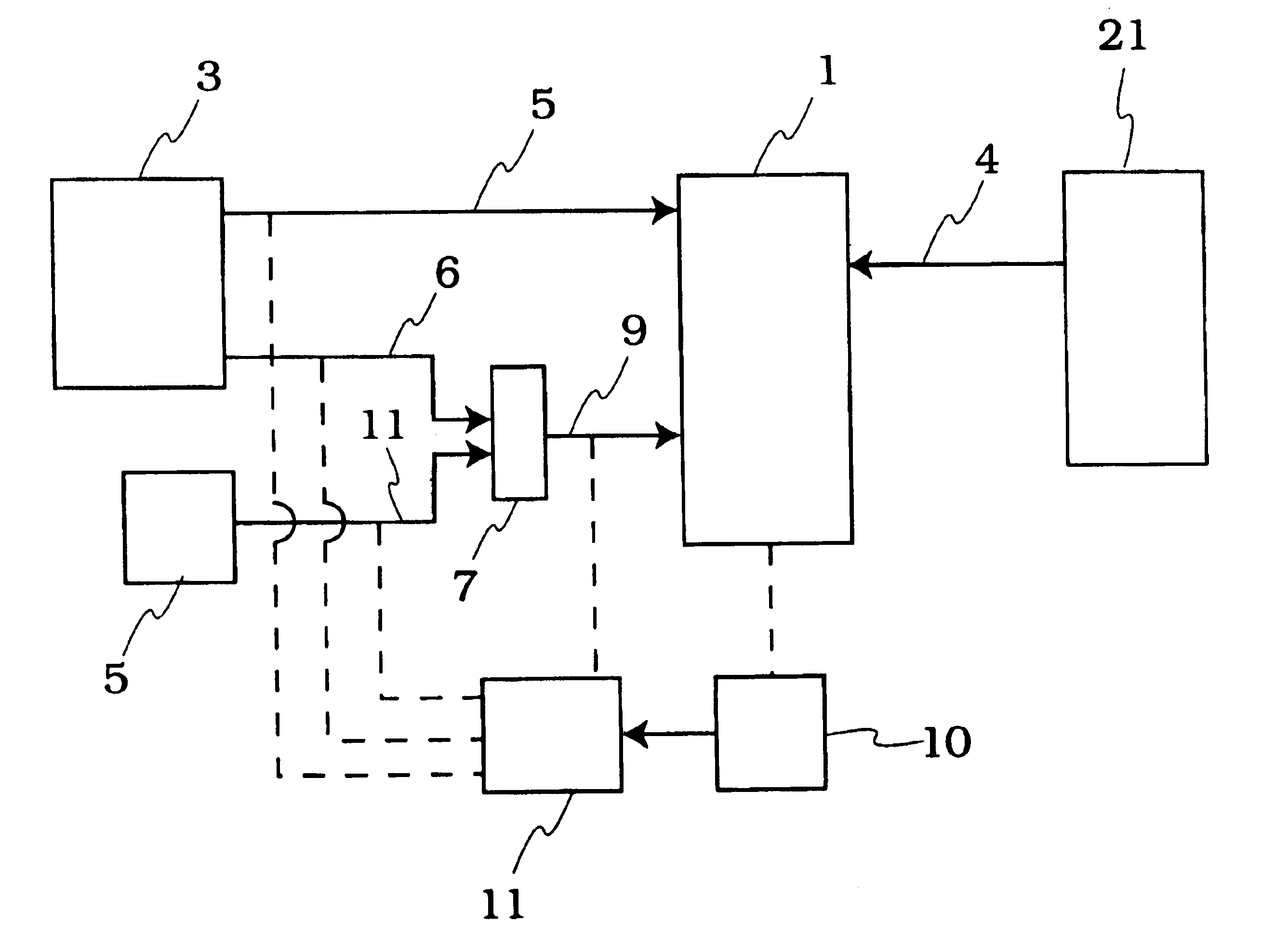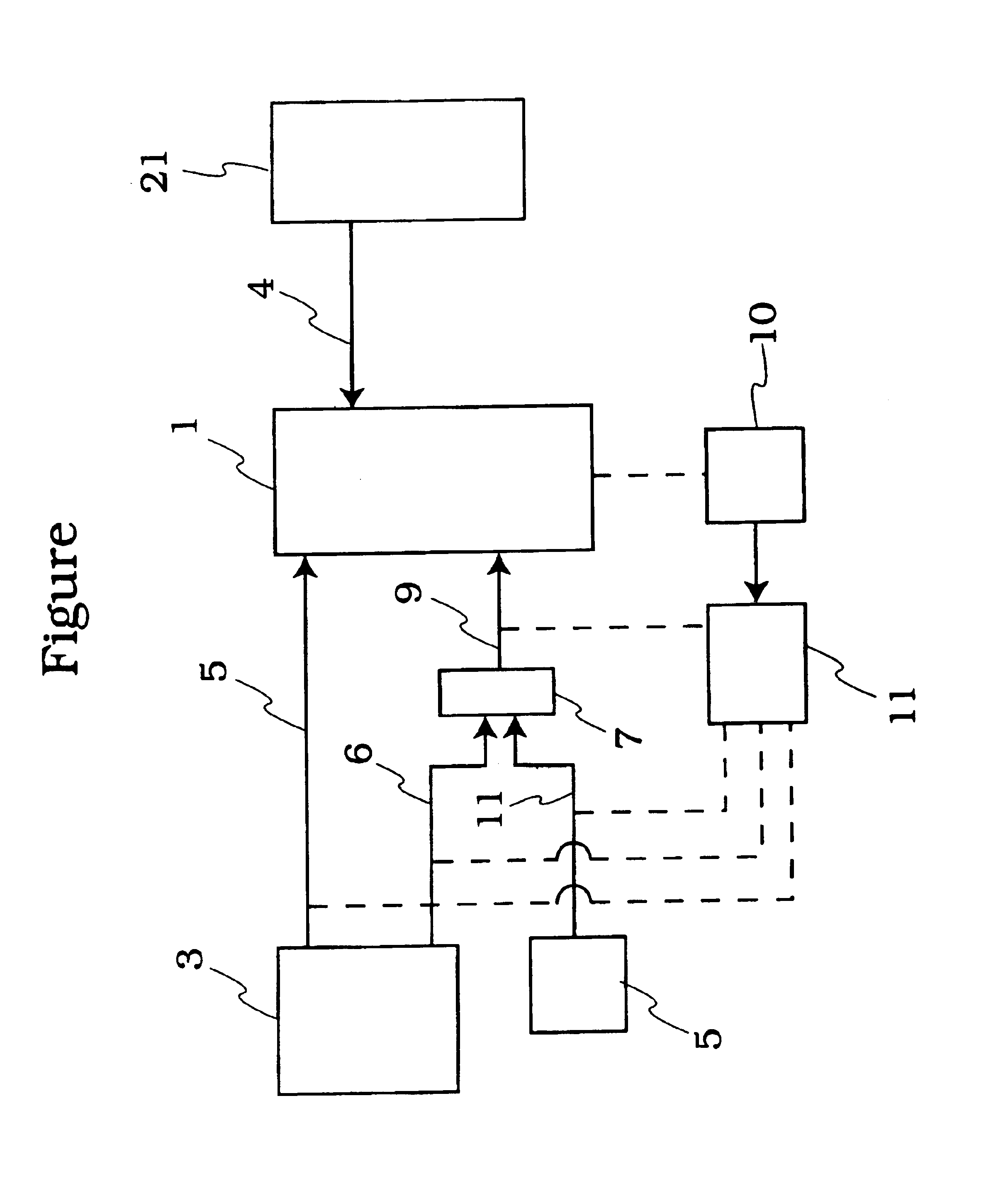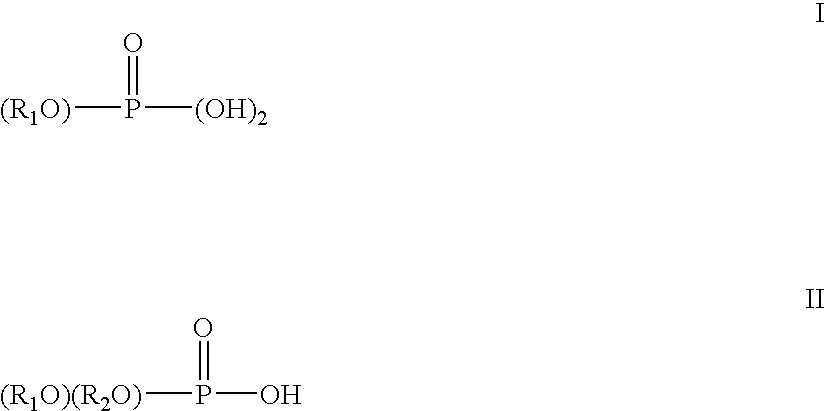Modification of lubricant properties in an operating all loss lubricating system
a lubricating system and all-loyalty technology, applied in the direction of machines/engines, mechanical equipment, auxiliaries, etc., can solve the problems of increasing engine maintenance needs, increasing the cost of lubricating, and not providing adequate performance over the full range of operating conditions, so as to improve acid-corrosion protection
- Summary
- Abstract
- Description
- Claims
- Application Information
AI Technical Summary
Benefits of technology
Problems solved by technology
Method used
Image
Examples
example 1
[0036]A commercial marine test engine was operated for 1000 hours using a fully formulated commercial marine oil as a reference for comparison and the same commercial oil to which 0.5 wt % of Mobilad C-423 was added. Mobilad C-423 is a C11-C14 monoalkylamine-C8 mono and dialkylphosphate additive having 1.75 equivalents of amine per equivalent of phosphates. The cylinder oil feed rate was approximately 25% lower than that used in a typical commercial engine operation thereby placing typical more stress on the cylinder oil. Wear data for cylinder rings and liners was obtained. The results are presented in Table I.
[0037]
TABLE IComparative 1Example 1% DifferenceAverage Top Ring Wear0.660.62−6%Rate, mm / 1000 hrsMaximum Top Ring Wear0.770.770%Rate, mm / 1000 hrsAverage Liner Diametral0.0230.0244%Wear Rate, Full Depth(Subto), mm / 1000 hrsMax. Liner Diametral Wear0.1340.126−6%Rate, Full Depth (Subto),mm / 1000 hrs.Ave. Liner Wear Rate, Top0.0270.008−70%Only (Dimples), mm / 1000hrs.Max. Liner Radial...
example 2
[0038]A series of oil compositions were prepared by blending a TBN 40 marine engine oil, oil 1, with different, high TBN additives. The additives used and their amounts are given in Table II. Also given in Table II is the viscosity, the VI, the SAE grade, TBN and storage stability data for each compositions. The storage stability data is obtained by storing the sample at the temperature and for the time period given in Table II and when noticeable sediment or floc (suspended particles) appear, measuring the volume percent of such precipitate. In Table II, Tr is trace, F is floc and HF is heavy floc.
[0039]
TABLE IIComparative 5Example 2Comparative 3Comparative 4Oil 1 + 600 TBNComparative 6Comparative 2Oil 1 + 500 TBNOil 1 + 300 TBNOil 1 + 400 TBNMagnesiumOil 1 + 400 TBNDescriptionOil 1Calcium SulfonateCalcium SulfonateCalcium SulfonateSulfonateCalcium PhenateKinetic Viscosity218.2235.5275.2250.2225.6260.3@400° C.Kinetic Viscosity19.7421.7724.1022.3920.9022.71@100° C.Viscosity Index103...
PUM
| Property | Measurement | Unit |
|---|---|---|
| weight ratio | aaaaa | aaaaa |
| weight ratio | aaaaa | aaaaa |
| weight ratio | aaaaa | aaaaa |
Abstract
Description
Claims
Application Information
 Login to View More
Login to View More - R&D
- Intellectual Property
- Life Sciences
- Materials
- Tech Scout
- Unparalleled Data Quality
- Higher Quality Content
- 60% Fewer Hallucinations
Browse by: Latest US Patents, China's latest patents, Technical Efficacy Thesaurus, Application Domain, Technology Topic, Popular Technical Reports.
© 2025 PatSnap. All rights reserved.Legal|Privacy policy|Modern Slavery Act Transparency Statement|Sitemap|About US| Contact US: help@patsnap.com



